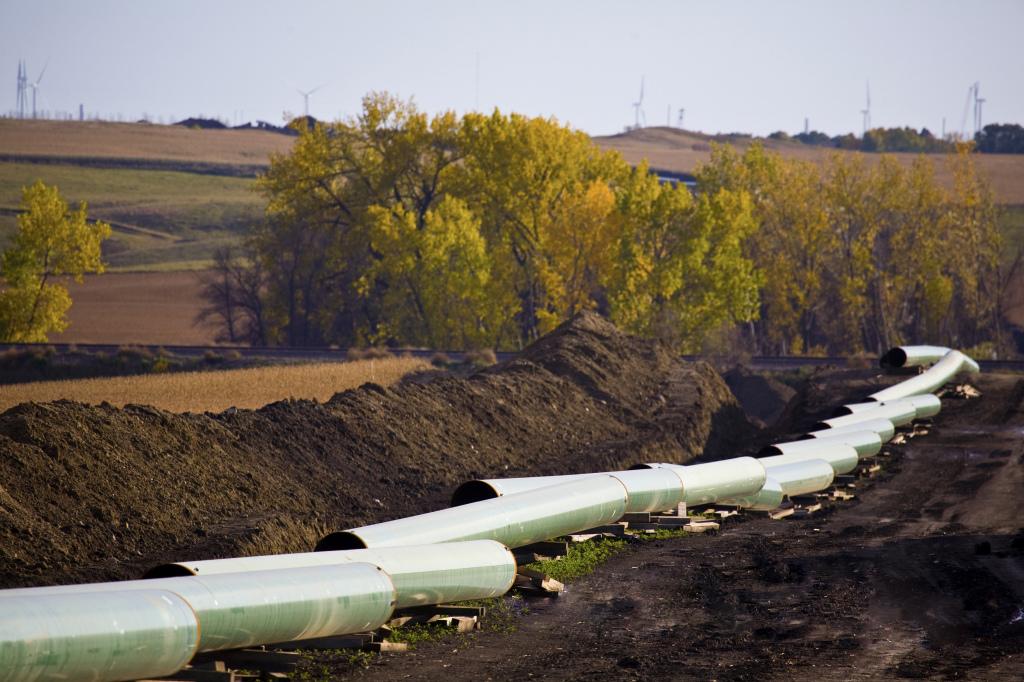
In 2011, climate change scientist and activist, James Hansen, published the report “Silence Is Deadly.” The paper contained an alarming message about a proposed pipeline, which would carry about 830,000 barrels of tar sands oil from Canada to Texas each day. Hansen wrote, “exploitation of tar sands would make it implausible to stabilize climate change and avoid disastrous global impacts…the pipeline does not serve the national interest, because it will result in large adverse impacts, on the public and wildlife by contributing substantially to climate change.”
This report was successful in inspiring one of the largest environmental campaigns in recent history, bringing thousands to protest in front of the White House, yelling for Obama to stop construction on the Keystone XL pipeline.
The Keystone XL pipeline is a proposed expansion to the existing Keystone pipeline, which already transports oil from Alberta, Canada to Cushing, Oklahoma. The Keystone XL pipeline would run oil from Alberta to Steele City, Nebraska, allowing more oil to flow to the United States from Canada.
Oil pipelines typically do not need to be approved by the federal government; however, the Keystone XL crosses an international border and therefore requires a presidential permit. As a result of the conversation spurred by Hansen’s report, the nation is split over the decision to approve the pipeline.
Critics of the pipeline fear negative environmental impacts of transporting and refining the tar sands found in Alberta’s oil deposits. Tar sands are the phrase critics of the pipeline have given to “bitumen,” the scientific name of Alberta’s oil. Bitumen is a combination of sand, water, and oil, considered to be more acidic and sulfuric than conventional crude oil due to abrasive quartz and sand particles.
Bitumen’s acidic nature has created concern that it will corrode pipes carrying it, causing leaks along the pipeline. Leaks due to corrosion have not been an issue on the existing Keystone pipeline carrying the same Bitumen. The substance’s nature also makes the refining process more difficult, resulting in large amounts of greenhouse gas emissions. In addition, Keystone XL would be built over one of the Midwest’s primary water sources, the Ogallala aquifer. Leakages from the pipeline could contaminate the water source. A proposal to reroute the pipeline away from the aquifer was drafted, but denied.
Supporters of the pipeline do not believe Keystone XL proposes any alarming environmental threats. They argue that the pipeline is no different than the thousands of others like it which already exist in the United States, so it is known that the environmental impacts of this pipeline will not be overwhelmingly devastating. Supporters claim studies warning against the corrosiveness of bitumen are exaggerated.
They also point out that if the bitumen is not refined in the United States, it will be refined elsewhere, resulting in the same amount of greenhouse gas emission. Supporters argue that the potential advantages of the pipeline are much greater than any environmental impact, as the pipeline would be a U.S job creator and reduce our reliance on oil from Venezuela and the Middle East. Some sources predict that the pipeline would create 42,000 jobs, while others predict only 2,000 would be created during construction after which 50 to 100 of those posts would be permanent.
Hansen’s dream came true earlier this month when legislation legalizing the Keystone XL Pipeline was struck down in the Senate. It is a huge victory for environmentalists and the movement against fossil fuels. The supporters of Keystone XL are right: the pipeline does not have any apocalyptic environmental consequences.
But the movement against the Keystone XL pipeline is not actually about the Keystone XL pipeline. The pipeline is merely a symbol for a greater environmental movement that weans the U.S off fossil fuels and toward renewable options. The Keystone is simply something more tangible than climate change for people to organize themselves around.
It is true that the Keystone XL is a poor symbol, as construction of the pipeline is actually a reasonable project, but whether the Keystone pipeline is the best symbol to promote climate change awareness is now irrelevant. It is the symbol we have, and anyone who supports the development of renewable energy should stand behind it.
 Lauren Gros is a freshman in the School of Foreign Service. The Modern Lens appears every other Wednesday at thehoya.com
Lauren Gros is a freshman in the School of Foreign Service. The Modern Lens appears every other Wednesday at thehoya.com














